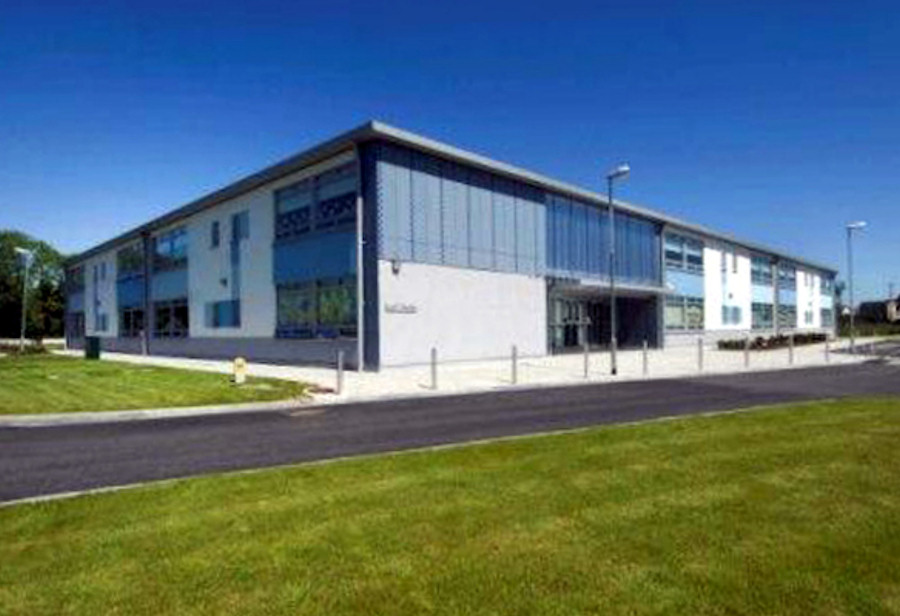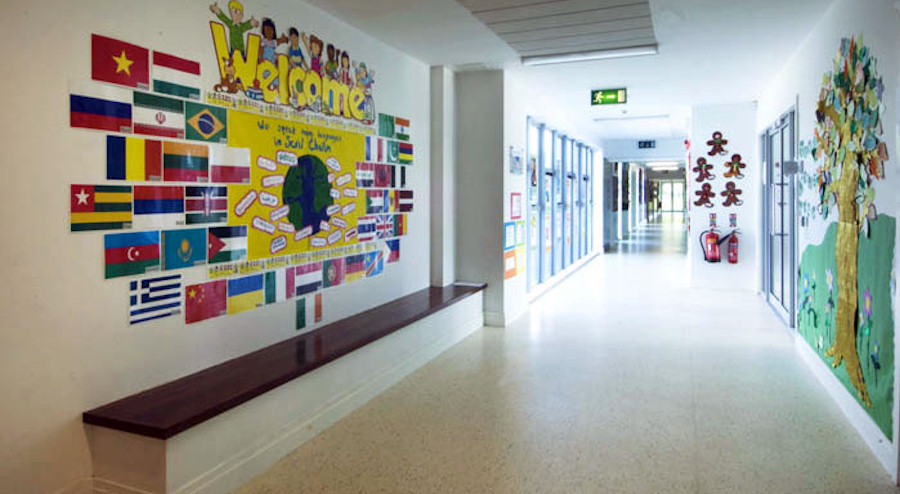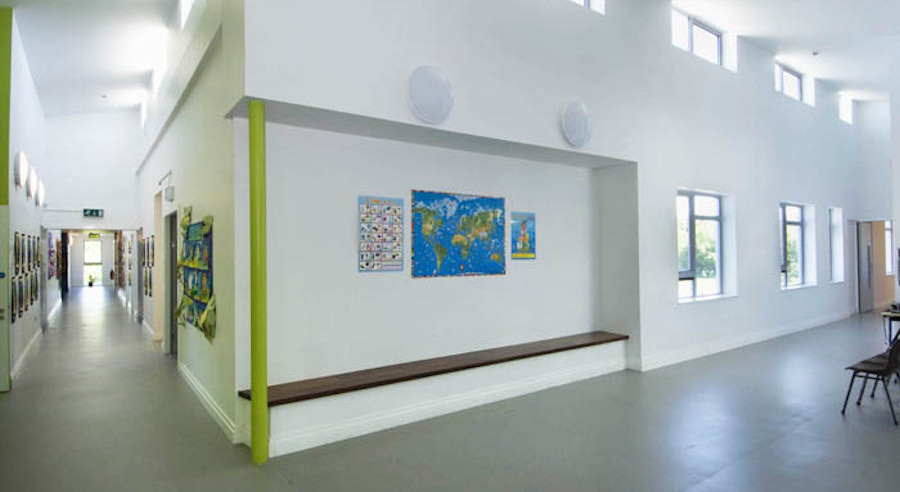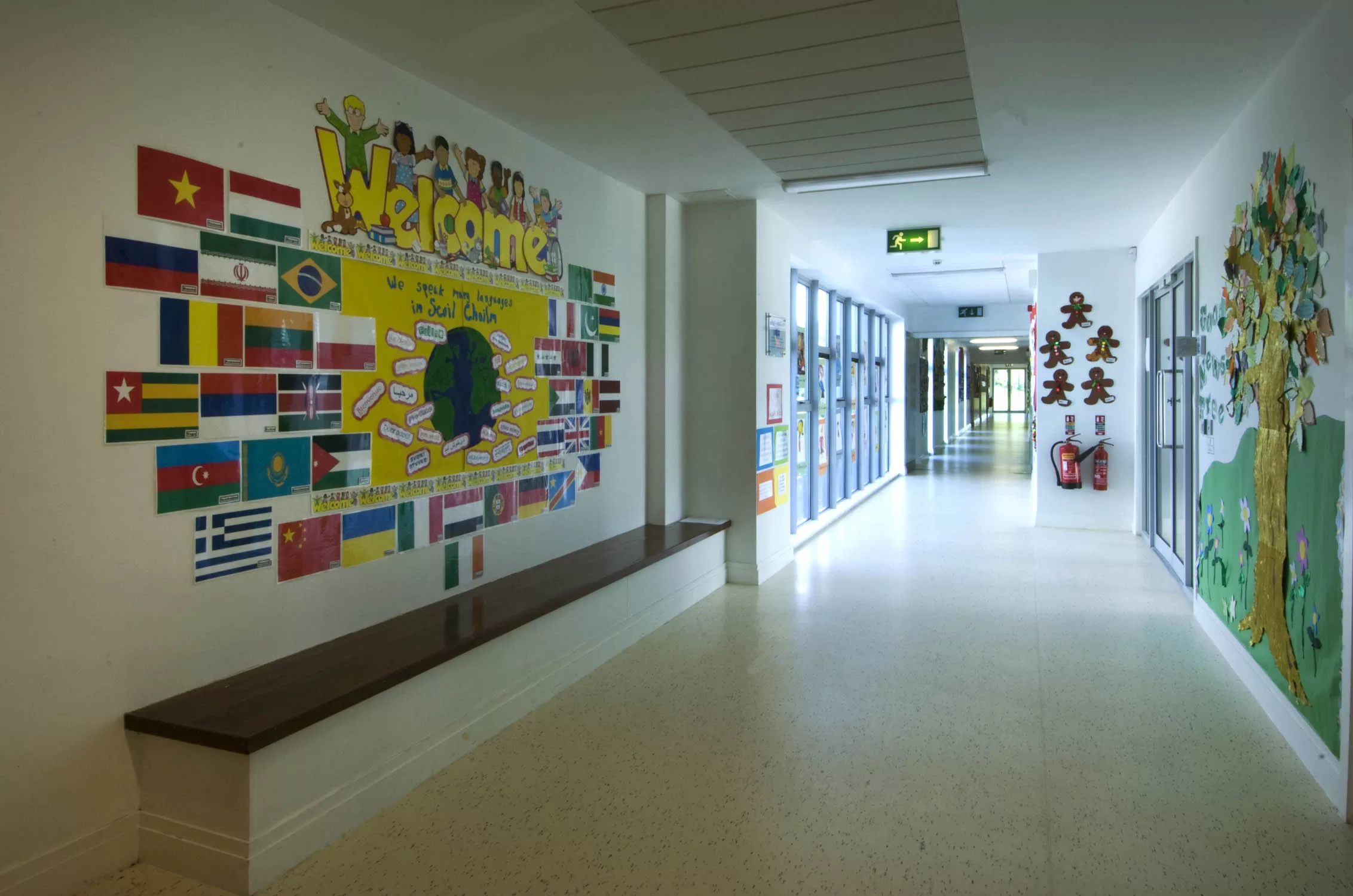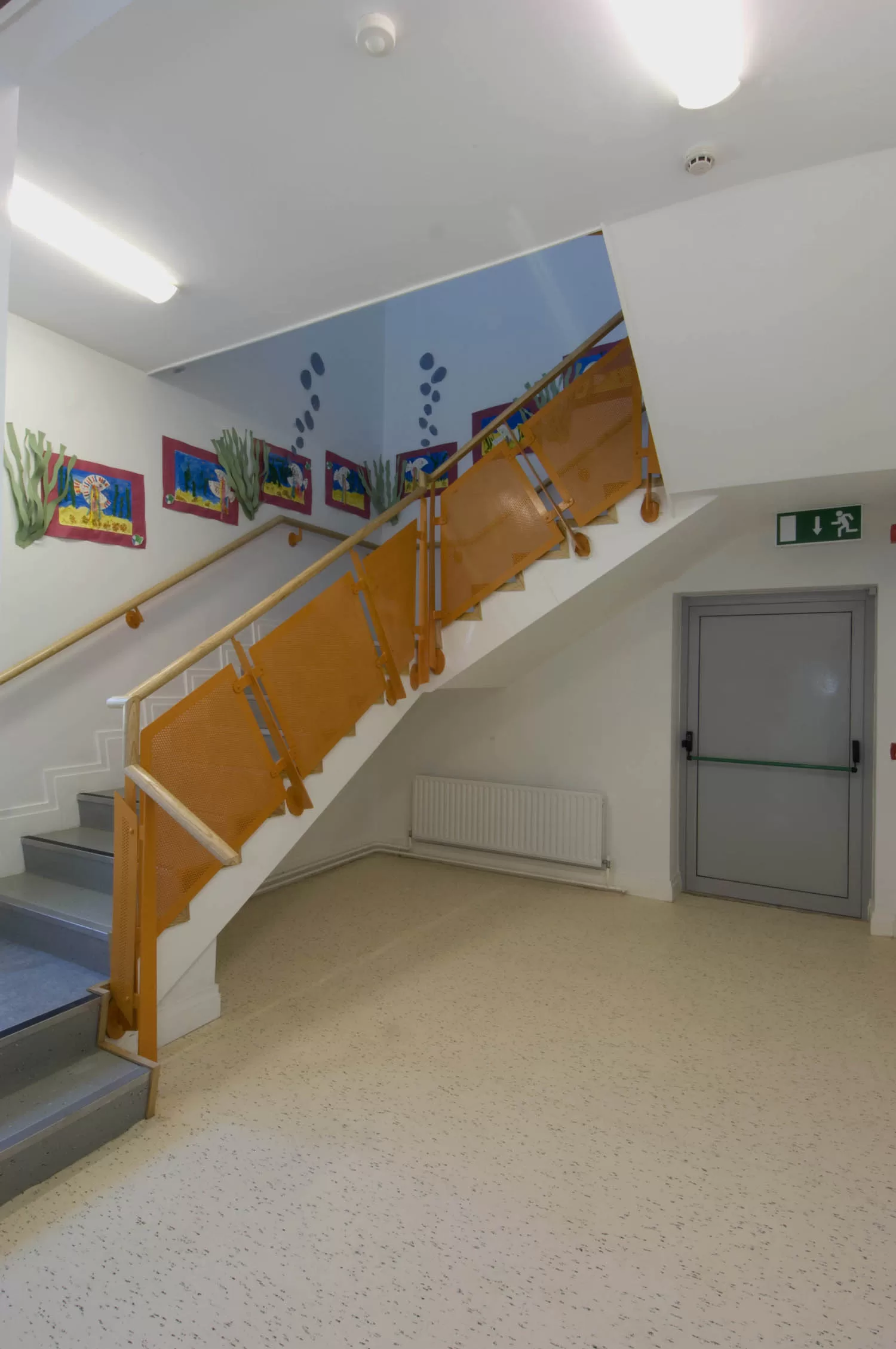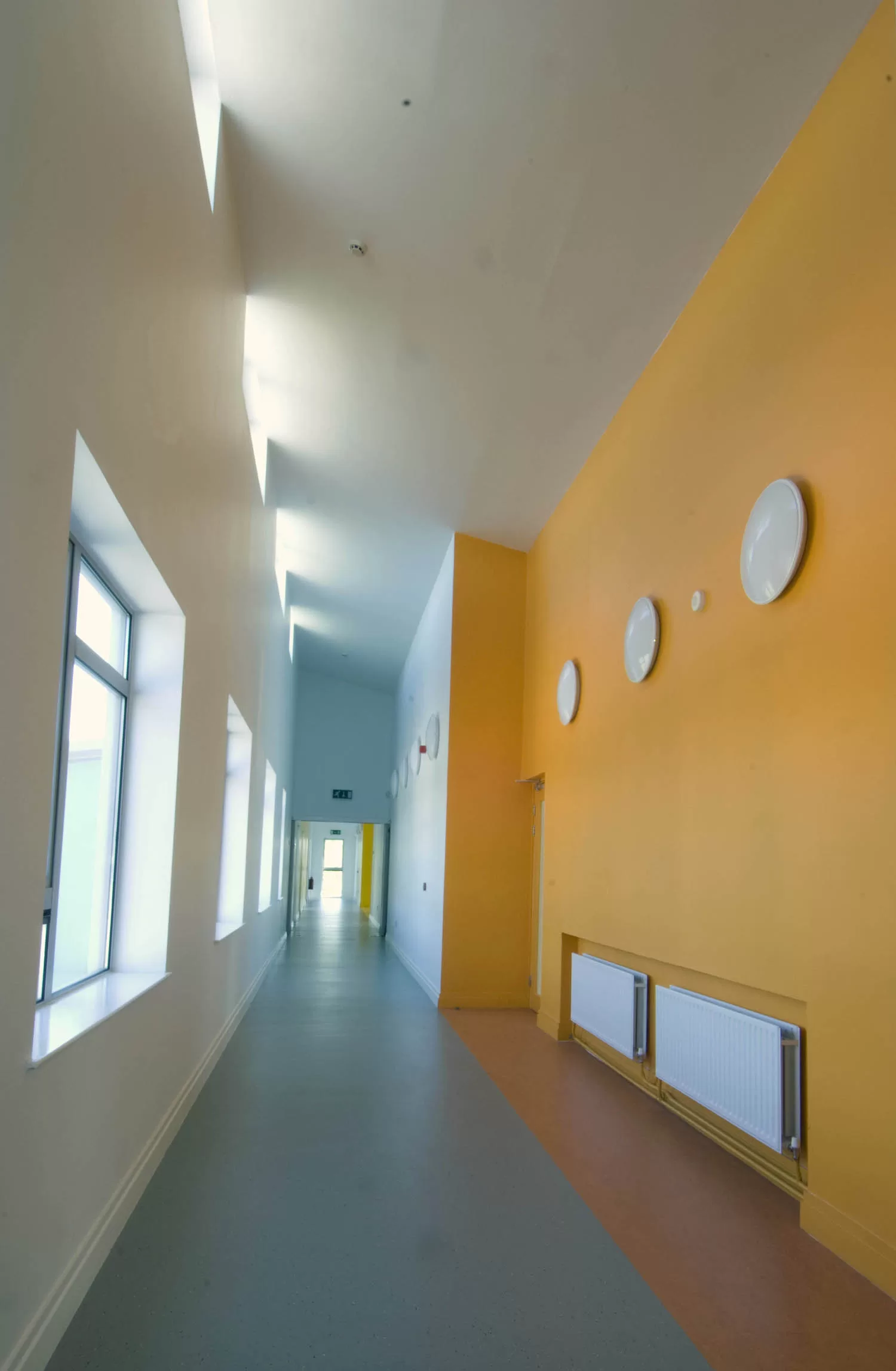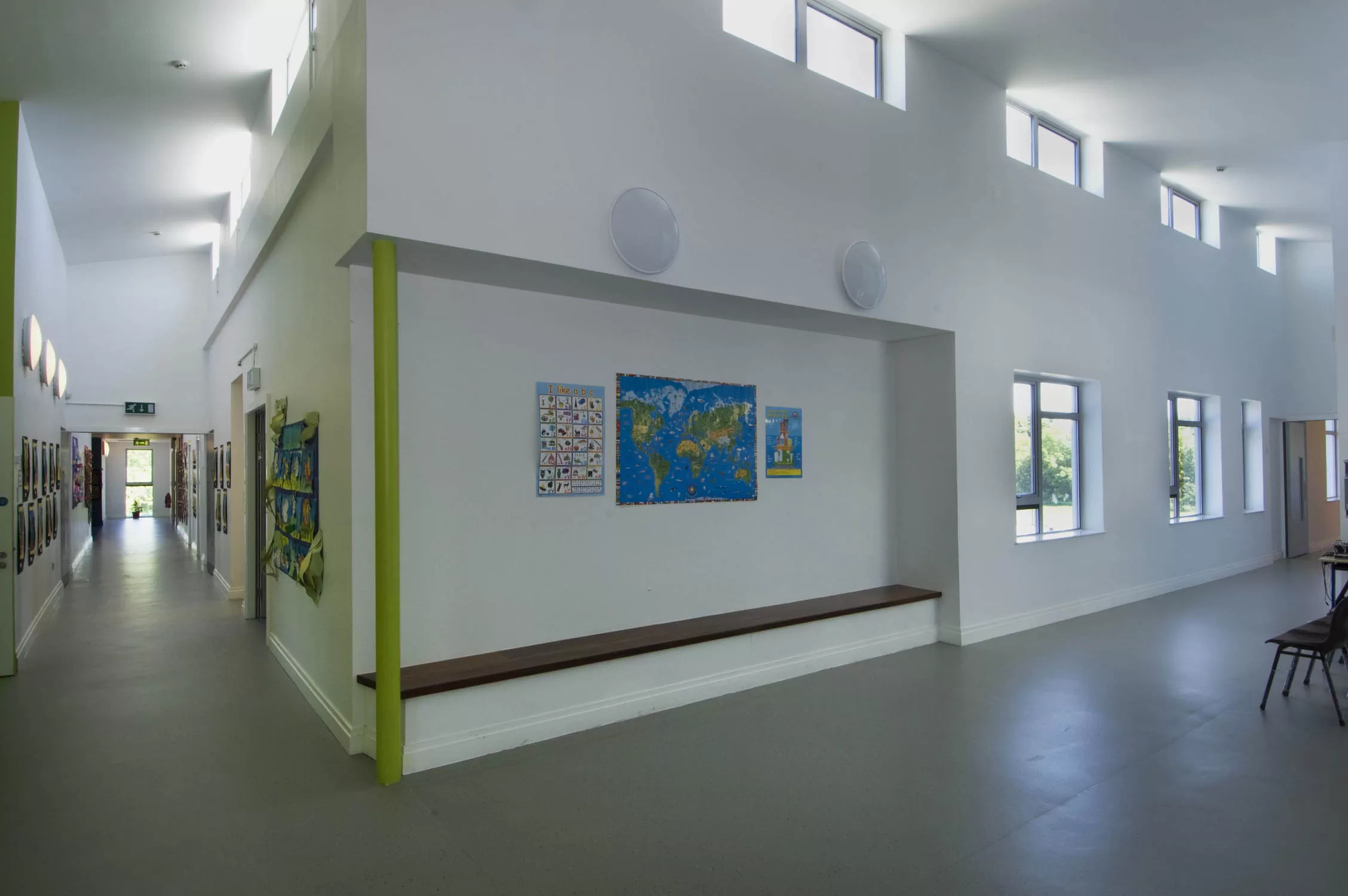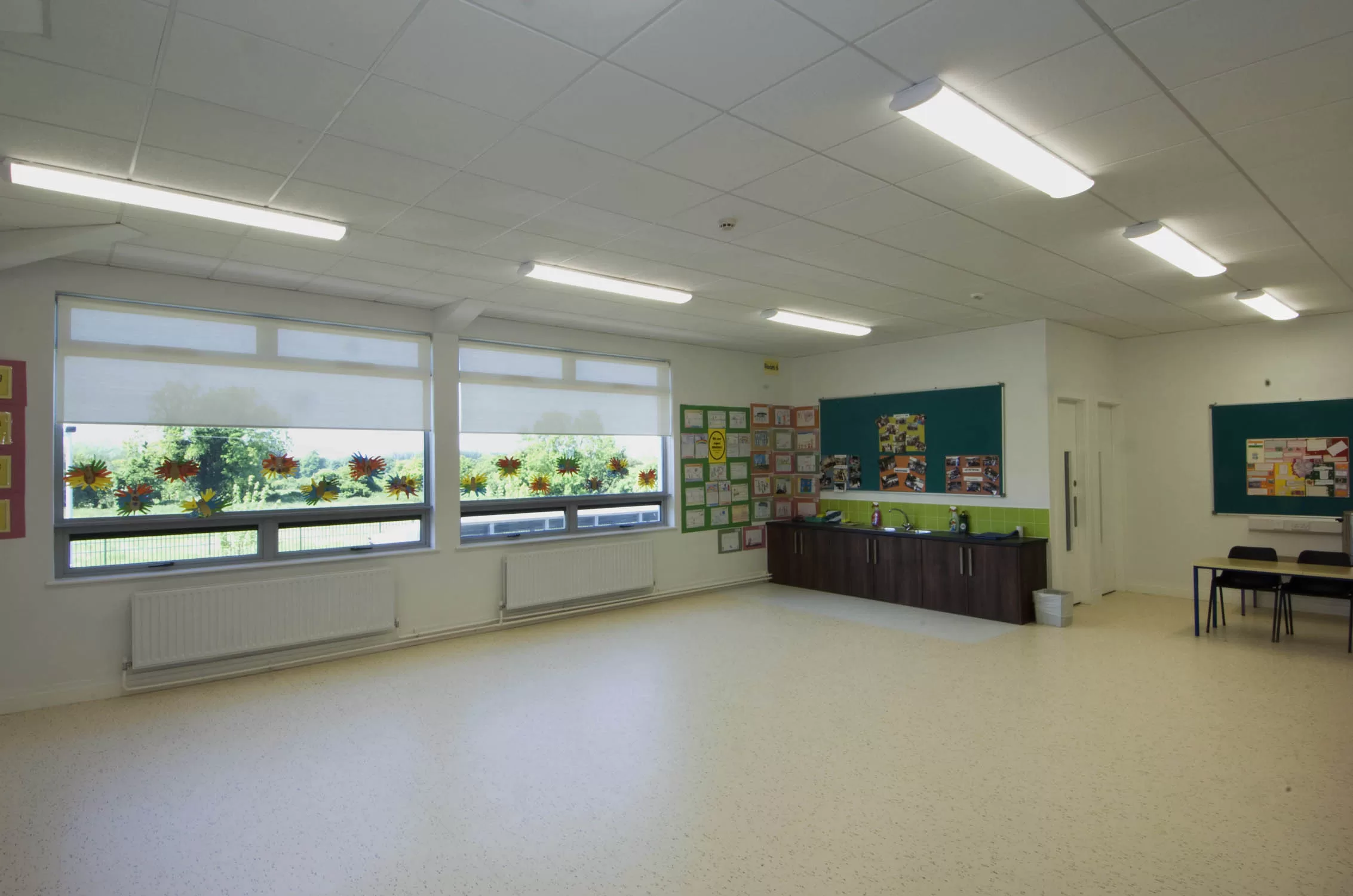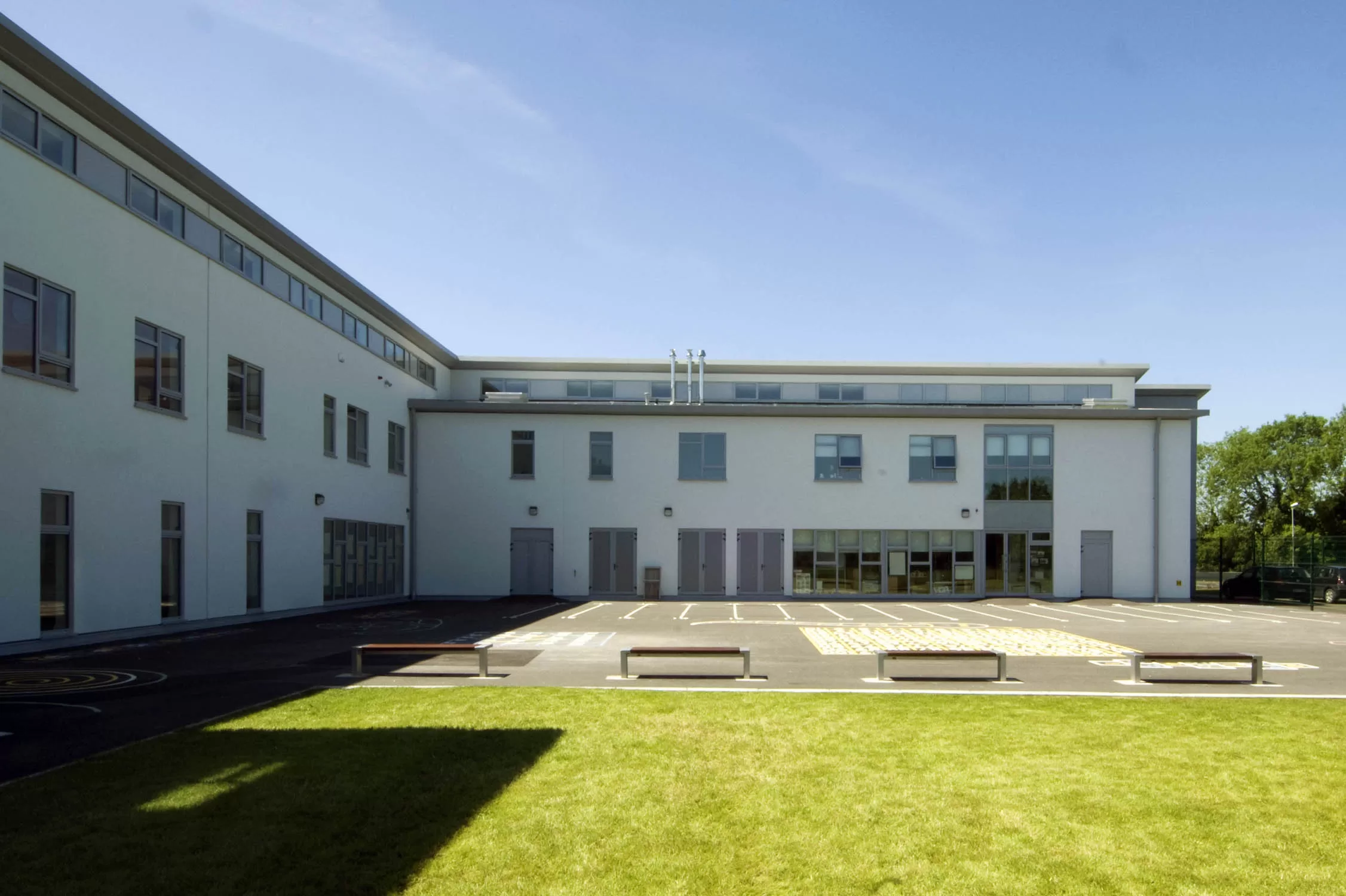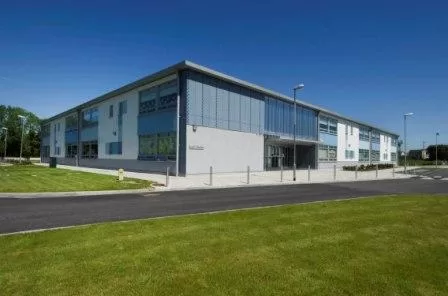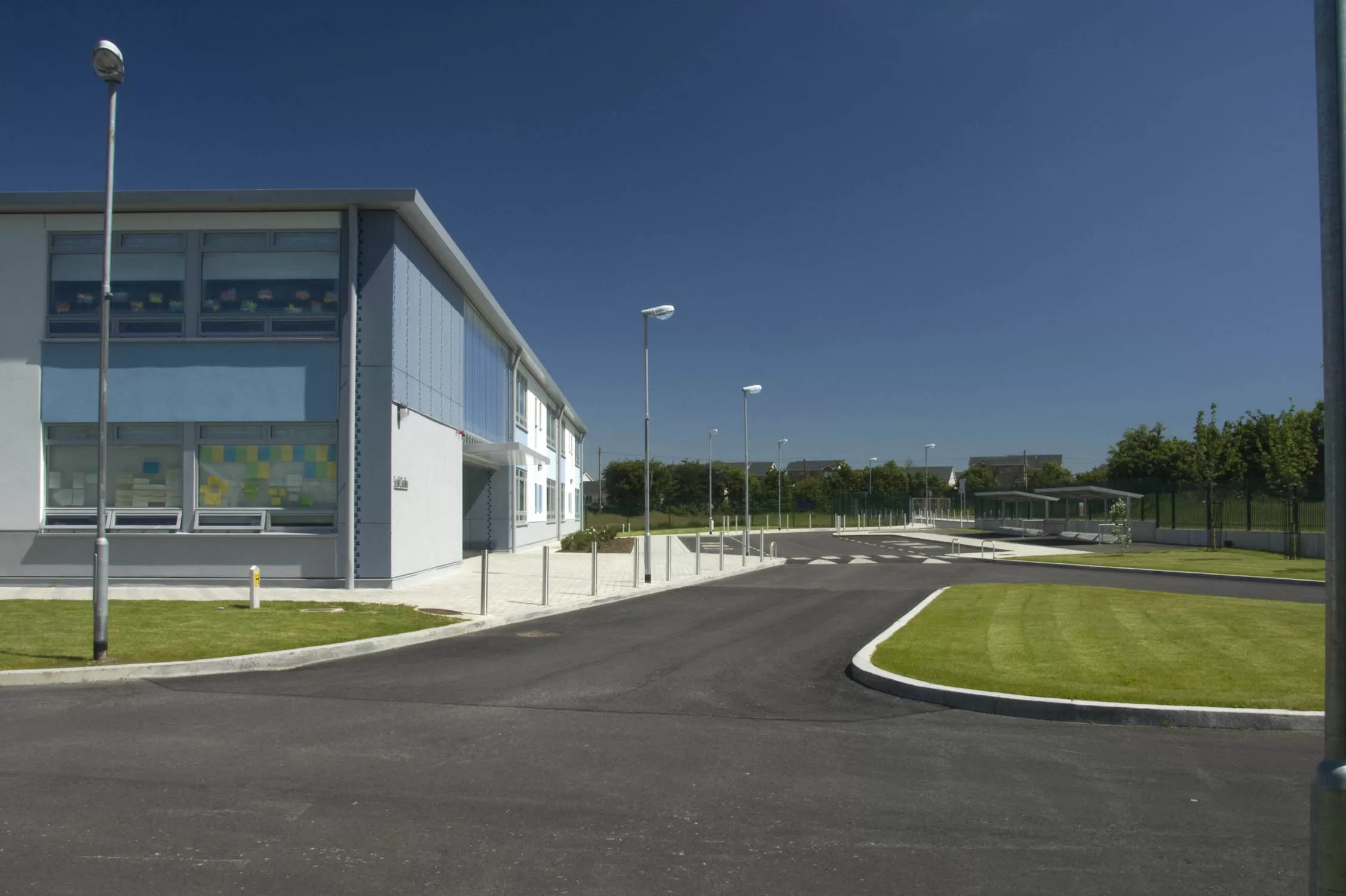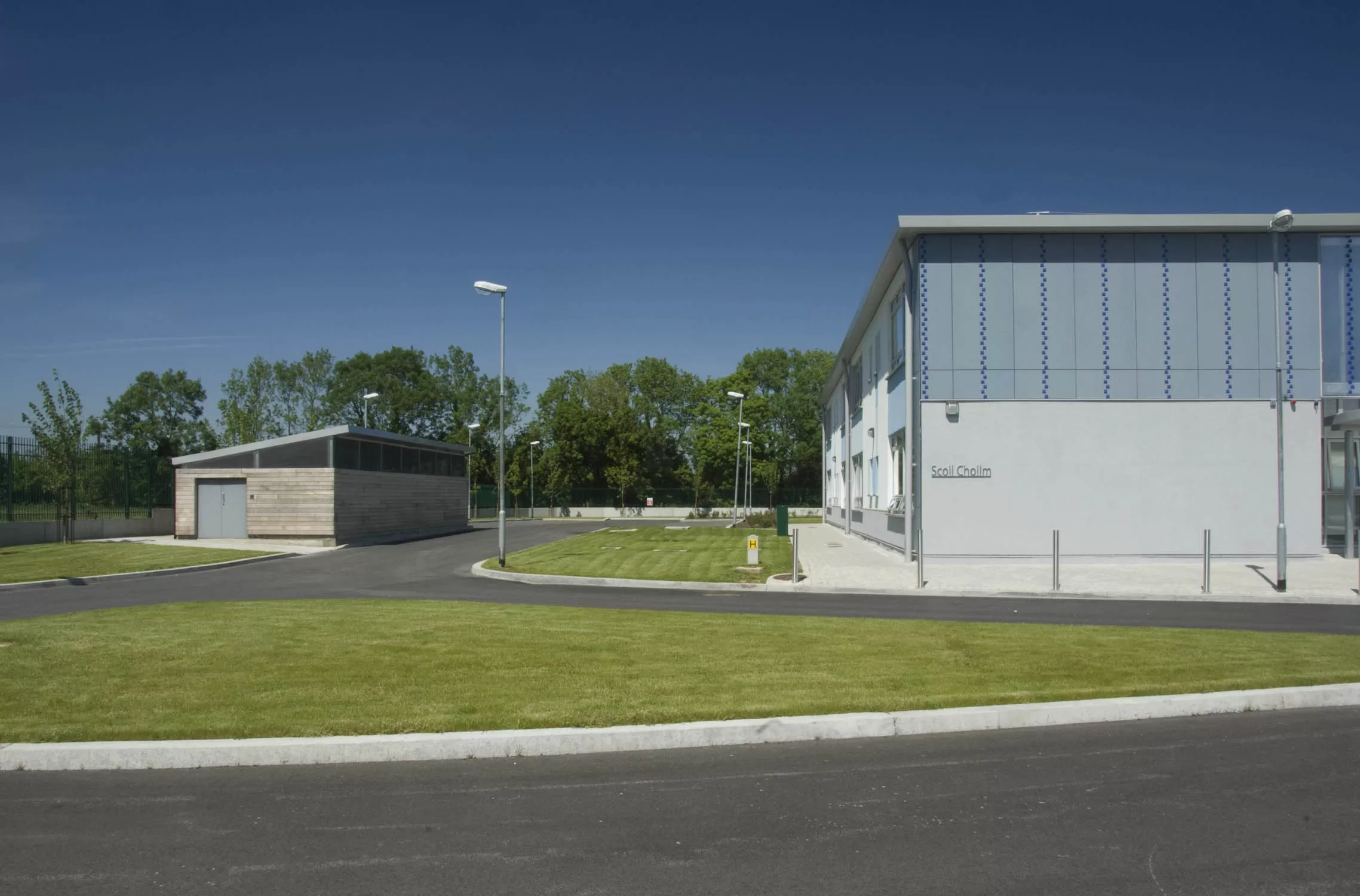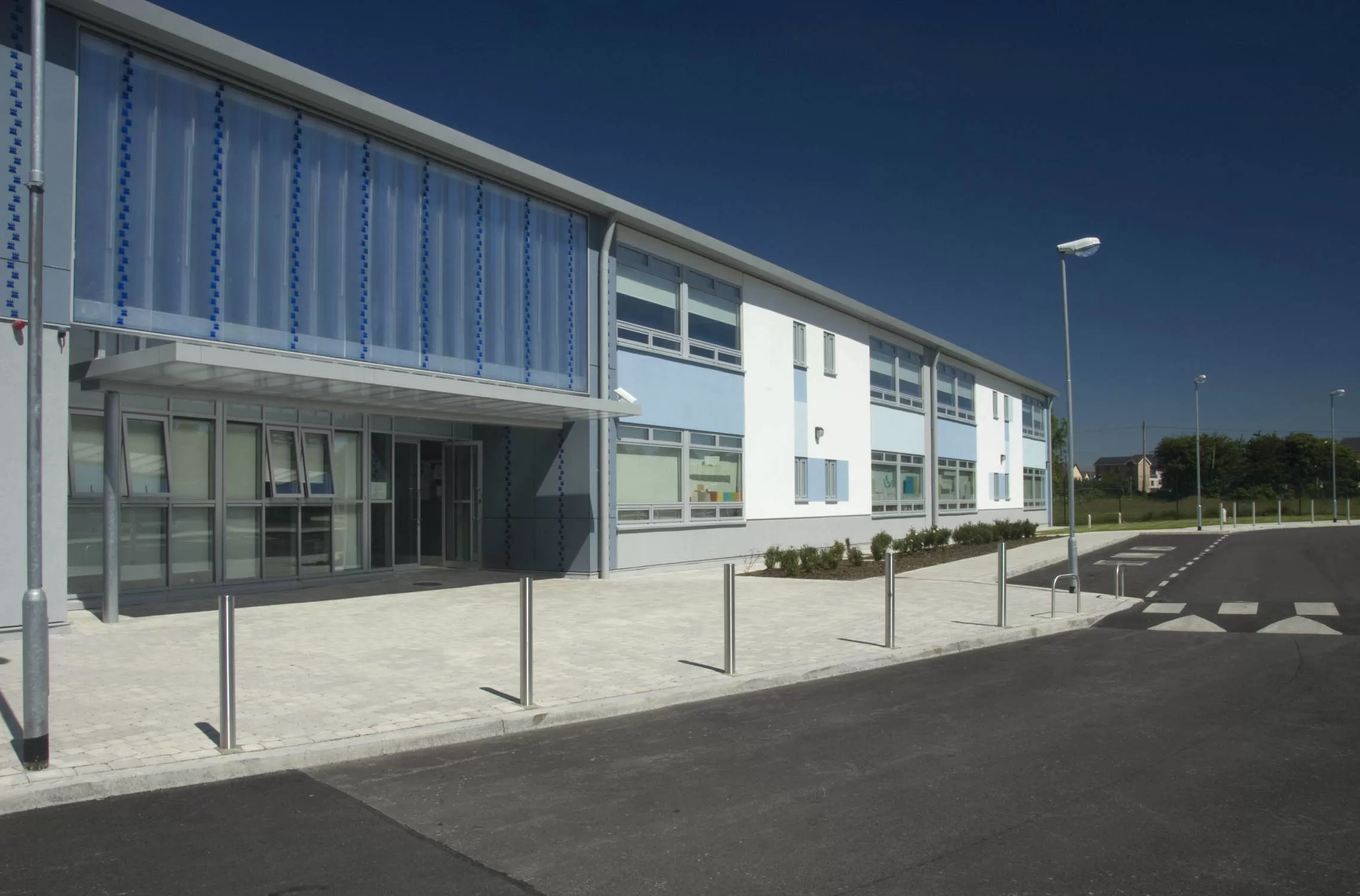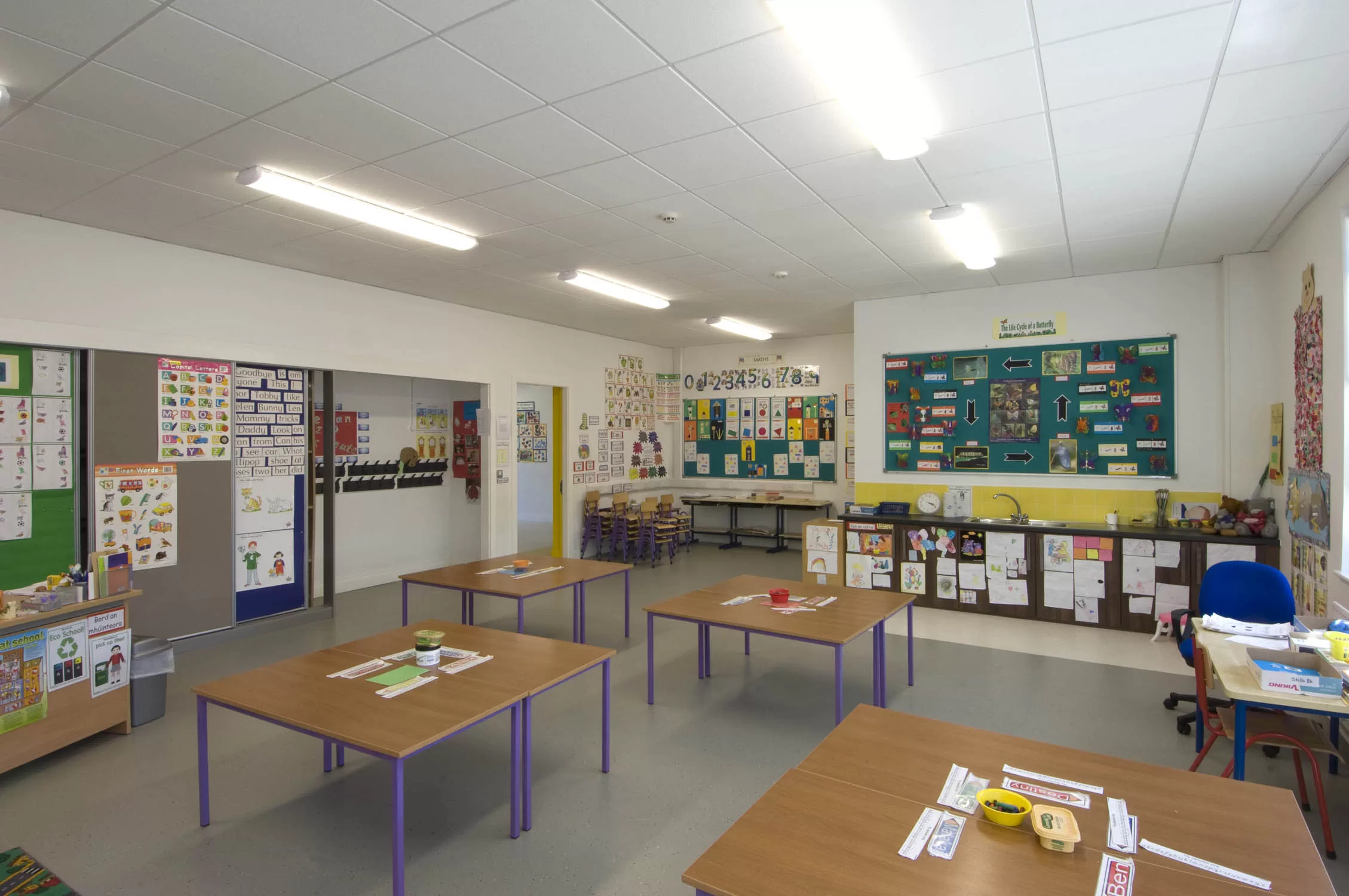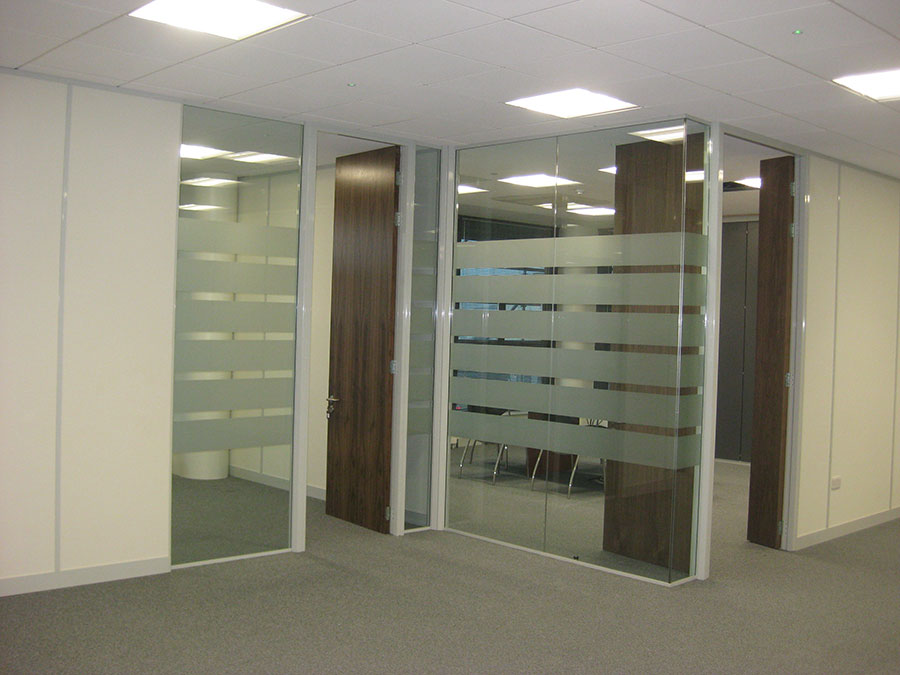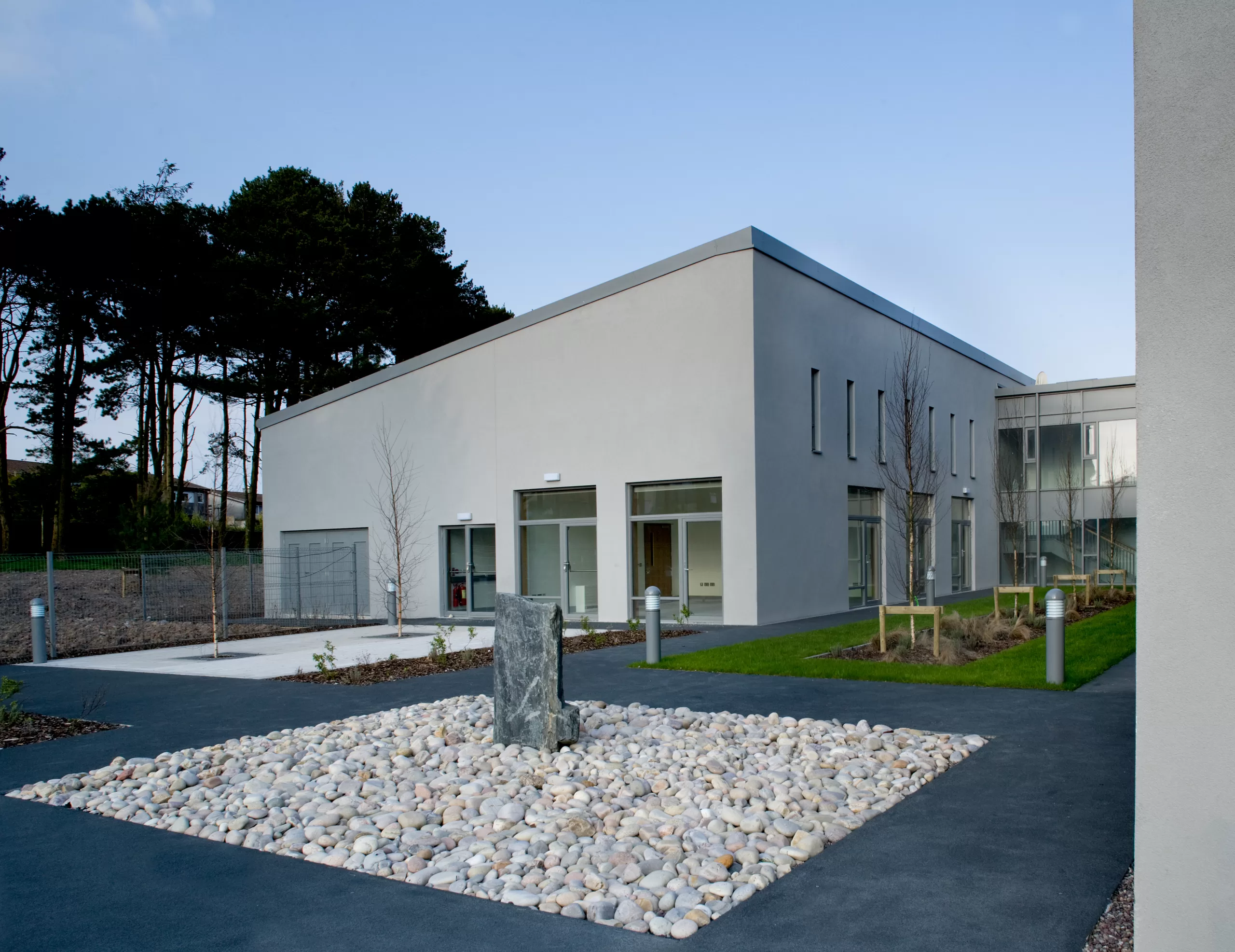Project Details:
The fast-track schedule was as follows:
- Tenders awarded the end of January 2008.
- Planning permission for the projects was lodged in early February 2008.
- Detail design period prior to the commencement on-site was 10 weeks with a target start date of the end of April 2008.
- Planning decision delayed.
- Construction on-site commenced on the 14th April 2008.
- The school was substantially complete on the 31st August 2008.
- Total on-site build time 20 weeks.
- The project was completed on time and to a high standard of finish.
Project Details
Planning permission for the projects was lodged in early February 2008 with construction on-site expected towards the end of April. All schools within this rapid build scheme were to be open for the start of the September 2008, which lead to at most a 24-week programme.
- ABM took on the role of project management within the Design and Build Consortium as well as the main contractor.
- This particular school consisted of a 16-classroom primary school.
- To achieve the fast-track programme the structural frame was built off-site using a light-weight steel frame system.
- This meant that after week 7 of the project the structure was erected and ready for windows and a roof.
- Wherever possible, off-site fabrication of the internal components were used such as pre-hung door sets, internal wall partitions, kitchens, cubicles, and heating pipe work runs.
- The project also involved extensive on and off-site civil's works and ancillary external site works
- Windows - The required glazing and curtain wall systems were all prefabricated off-site in a controlled environment. The windows were manufactured simultaneously and delivered to site in bulk.
- Door Systems - In order to facilitate an advantageous programme and advanced planning, composite door sets were used. These door systems ensure total compatibility of sizes, materials and performance.
- Roof Systems - The advantages of this particular prefabricated roof system are: quality control, cost of construction ,rapid installation, any roof shape such as gables and hips can be achieved. Trusses are custom-made to any design, pitch or span to suit that particular building.
- The advantages of this type of roof finish is that it can be installed simultaneously with other building elements to allow the building to become watertight. This helps to create an internal working environment for all internal trades.
- Wall Systems - The walls and facade were finished with an Aqua panel exterior cement board and ancillary acrylic finished render system with a breather membrane. This assists in creating an internal working environment for all internal trades.
- The building was constructed with a high emphasis on build quality & durability using an IBA certified Fusion steel framed building system.
- A key advantage of building off-site is the higher degree of predictability it can offer - reducing the risk of time and cost overruns.
Advantages of ABM’s Off-Site Manufacturing
Sustainability
Off-site manufacturing works in hand with sustainability for the following reasons:
- Up to 67 per cent less energy is required to produce a system build compared to an equivalent traditionally-built project.
- Off-site manufacturing can generate up to 90 per cent fewer vehicle movements to site - reducing carbon emissions, congestion and disruption.
- Off-site construction can reduce on-site waste by up to 90 per cent.







